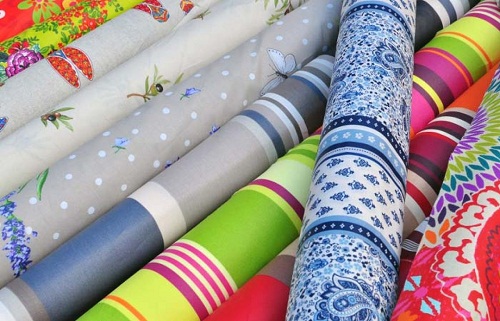PAKISTAN TEXTILE: COMPETITIVE INPUTS, VALUE ADDITION CAN BOOST ECONOMIC GROWTH

PAKISTAN TEXTILE: COMPETITIVE INPUTS, VALUE ADDITION CAN BOOST ECONOMIC GROWTH
Recovering from the pandemic shocks, Pakistan’s textile exports are set to grow to $22 billion in FY22. Most of this growth will be driven by the introduction of supportive policies by the government and stabilization of the industry.
As per a Global Village Space report, Pakistan’s textile industry has yielded spectacular results in recent times. Boosted by increasing investments from industrialists, the industry is set to rise by 25 per cent annually from FY2022.
Market uncertainties, miniscule share to stall growth
However, the industry also faces certain challenges in the coming year. It is likely to be particularly troubled by the uncertainties in the cotton as well as currency markets. Also, the industry’s miniscule share of 1.7 percent in the global textile market may prove to be a cause of concern.
Another challenge the industry faces is the rise in cotton yarn prices. Globally, cotton prices have reached $1 per pound, sparking a debate over the need for a regulatory duty to be imposed on yarn exports. However, such regulatory duties can have adverse effects on the domestic market and hence, the government needs to abstain from such quotas.
for a regulatory duty to be imposed on yarn exports. However, such regulatory duties can have adverse effects on the domestic market and hence, the government needs to abstain from such quotas.
The government needs to refrain from buying cotton at import substation from the local market and selling it at 10 percent below export parity price. It should also not subsidize the downstream industry as this puts farmers at a great disadvantage. A conducive environment has led to a 50 percent rise in cotton production in Pakistan this year. This is expected to surge the crop’s value to Rs 600 billion, thus giving farmers an additional benefit of Rs. 400 billion.
APTMA to set up new 100 textile units
APTMA and all textile industries have decided to pay international parity prices to domestic farmers to help them sustain themselves. APTMA has also set up the APTMA Cotton Foundation (ACF) to improve the cotton sector’s performance. The foundation aims to promote model farming techniques by creating cotton clusters and centers of excellence.
Pakistan fully utilizes its domestic cotton supply by exporting 84 per cent of the apparels made from cotton. The country’s synthetic fiber market is also booming with demand for athletic wear rising. However, it needs to upgrade its production techniques to compete in this market. It hopes, incoming investments will help in upgrading the industry’s technology and capture a higher share in the synthetic fiber market.
The current currency pressures in the industry can be attributed to the previous lack of investments. It is threatening to slow the growth pace of the large scale manufacturing sector in the Pakistan.
The textile sector accounts for 60 per cent of Pakistan’s total exports. The sector needs consistent support and investments to achieve economic growth. It aims to boost exports by setting up 100 new textile units with an investment of $5 billion.
Targeting $21 exports by FY2022-end
The industry can achieve its target of $21 billion textile exports by procuring energy at regionally competitive prices. For this, the government needs to introduce a long-term textile policy incorporating regionally competitive energy tariffs.
The government’s regionally competitive energy pricing policy has helped the industry expand its operations. However, to sustain this expansion, it needs to upgrade its current technologies.
Technology upgradation will not only help the industry diversify into other related sectors, but also enhance its position in the apparel value chain and redesign import duty suspension and refund programs for exporters. Pakistan’s textile sector can thus lead its economic growth by a consistent supply of competitive inputs and constant value addition.
By Fashionating world
https://www.fashionatingworld.com/new1-2/pakistan-textile-competitive-inputs-value-addition-can-boost-economic-growth
